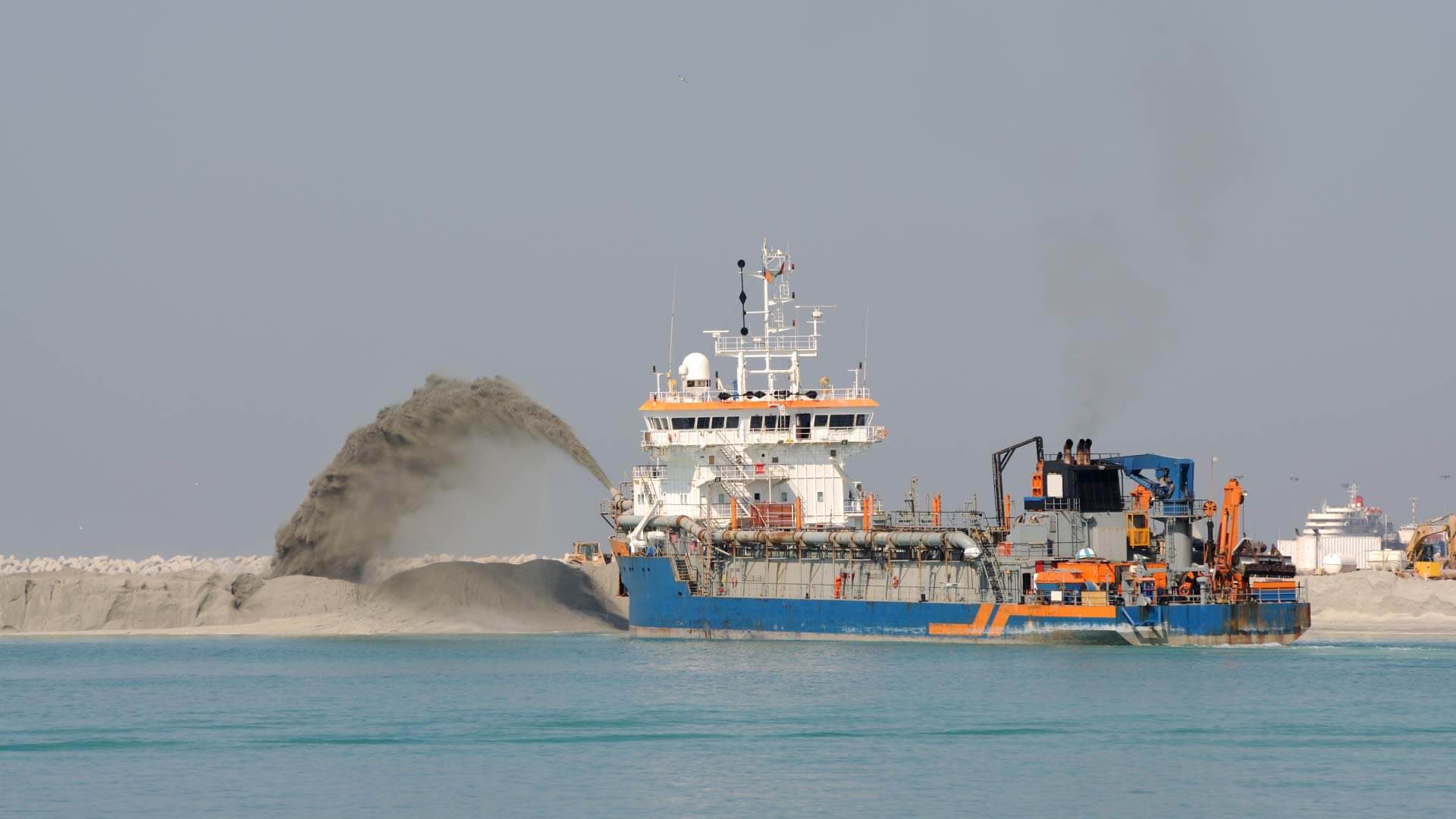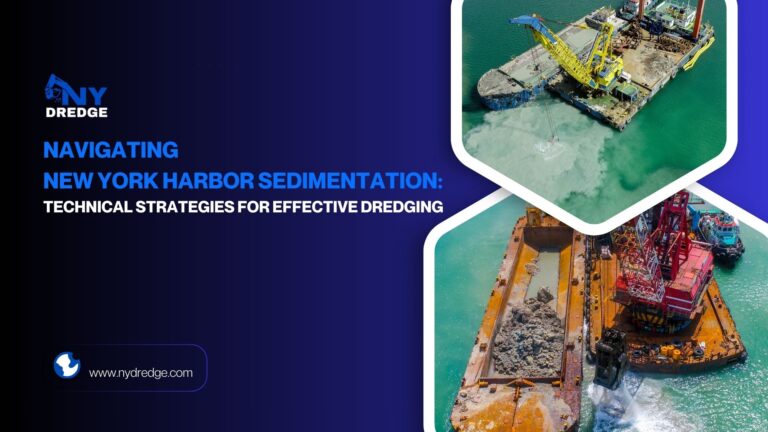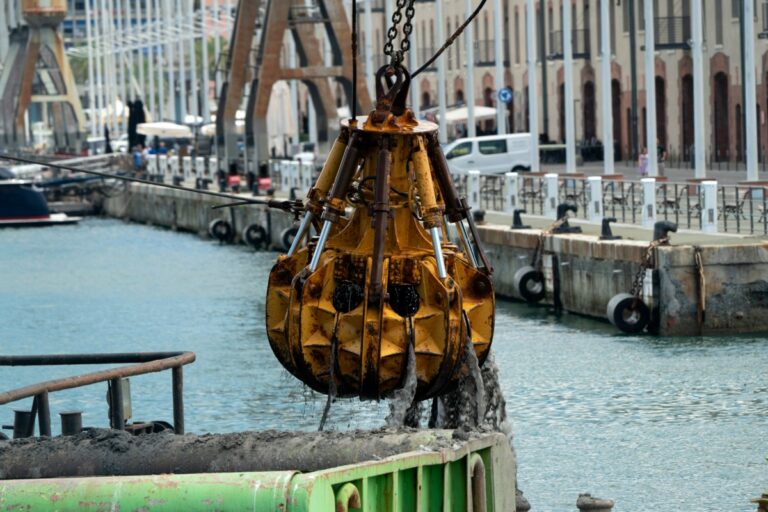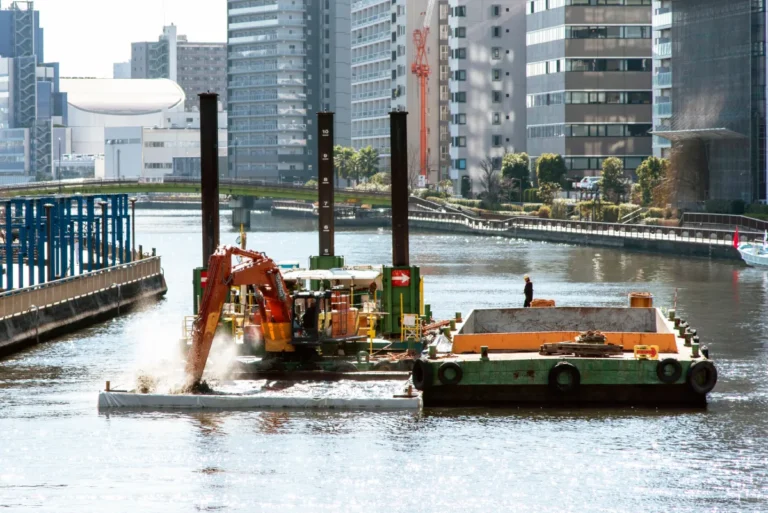Hydraulic dredging is a highly efficient method for excavation, sediment removal, and waterway maintenance. It utilizes powerful suction and pumping mechanisms to remove and transport sediments, debris, and other materials from the bottom of water bodies. Whether used to deepen navigation channels, restore ecosystems, or support construction projects, hydraulic dredging plays a critical role in maintaining waterways and coastal infrastructure.
Efficiency in hydraulic dredging operations is essential for reducing operational costs, improving project timelines, and minimizing environmental impact. By optimizing the hydraulic dredging process, operators can enhance material removal rates, improve slurry transport, and reduce energy consumption. Additionally, selecting the right hydraulic dredging equipment, such as cutter suction dredges or submersible pumps, ensures optimal performance across different dredging applications.
Several key factors influence the efficiency of hydraulic dredging, including pump selection, pipeline configurations, sediment characteristics, and operational techniques. Proper equipment maintenance, real-time monitoring, and advanced automation technologies further enhance dredging performance. By implementing best practices and leveraging modern innovations, project managers can maximize efficiency while maintaining environmental compliance and cost-effectiveness.
Understanding the Hydraulic Dredging Process

Definition and Fundamental Principles of Hydraulic Dredging
Hydraulic dredging is a sediment removal technique that uses water flow and suction to excavate, transport, and relocate underwater materials. Unlike mechanical dredging, which relies on buckets or clamshells to scoop sediment physically, hydraulic dredging employs powerful pumps and pipelines to create a continuous flow of material. This method is widely used for large-scale excavation projects where efficiency and minimal environmental disruption are priorities.
At its core, the hydraulic dredging process involves the loosening of sediment through natural water currents or specialized cutter heads, followed by suction intake that transfers the material through a dredge pump into a discharge pipeline. The dredged material can then be relocated to a designated disposal site or processed for land reclamation, beach nourishment, or environmental remediation.
How Hydraulic Dredging Equipment Utilizes Suction and Pumping Mechanisms
The effectiveness of hydraulic dredging relies on specialized equipment designed to optimize sediment removal and transport. Hydraulic dredging equipment consists of key components that work together to enhance efficiency.
Dredge pumps play a crucial role by generating powerful suction that lifts and transports sediments through a pipeline system. These pumps are designed to handle varying material densities, from fine silts to coarse sands, ensuring smooth material flow. In cutter suction dredges, rotating cutter heads break up compacted sediment before it enters the suction intake, making it easier to transport.
Pipeline systems are another essential component of hydraulic dredging equipment. They carry the dredged slurry to a designated discharge site, whether onshore, in deeper waters, or to a processing facility. In cases where long-distance transport is required, booster pumps are installed along the pipeline to maintain efficient flow and prevent blockages. By optimizing the configuration and operation of these components, dredging efficiency can be significantly improved.
Comparison with Mechanical Dredging and Key Advantages of Hydraulic Methods
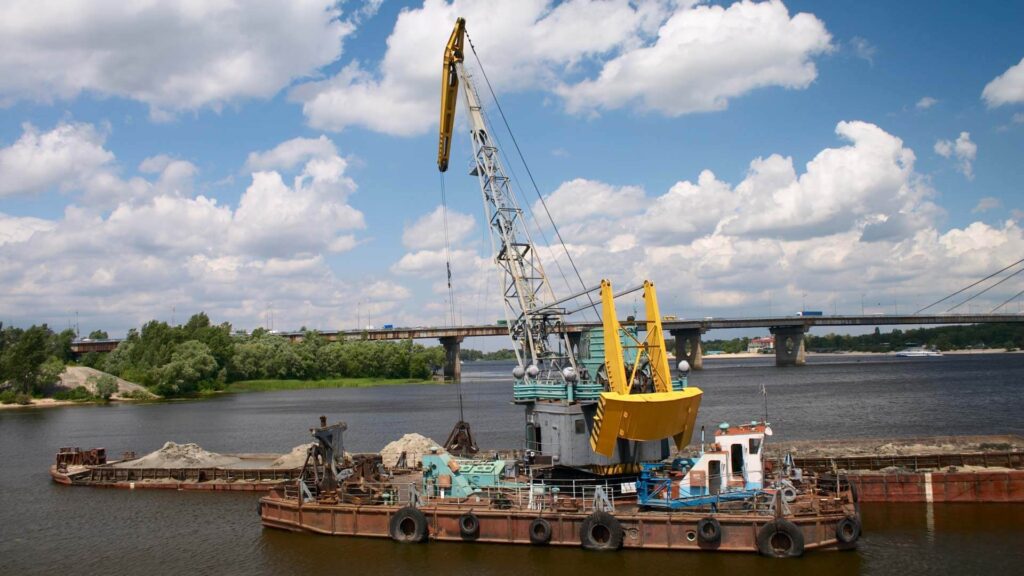
Mechanical and hydraulic dredging differ in their approaches to material removal, and each method has distinct advantages depending on project requirements. While mechanical dredging relies on clamshell buckets, excavators, or draglines to physically lift sediment and place it onto barges or trucks, hydraulic dredging offers a more continuous and efficient process.
One of the primary advantages of hydraulic dredging is its ability to transport material over long distances via pipelines, reducing the need for additional handling and transportation logistics. This makes it particularly effective for large-scale projects such as port deepening, land reclamation, and environmental dredging. Additionally, because hydraulic dredging uses water to move sediment, it minimizes the risk of sediment resuspension, which is a common issue in mechanical dredging operations.
Mechanical dredging, on the other hand, is often preferred for projects involving denser or rocky materials that cannot be easily transported as slurry. However, it typically requires more labor, equipment, and operational time than the streamlined hydraulic dredging process.
Common Applications of Hydraulic Dredging

Due to its efficiency and ability to handle large volumes of sediment, hydraulic dredging is widely used across various industries. One of its most common applications is port and channel deepening, where accumulated sediments must be removed to maintain safe navigation for ships. By continuously pumping material away, hydraulic dredging allows for rapid and effective waterway maintenance.
Another key application is environmental dredging, where contaminated sediments are extracted to restore aquatic ecosystems and improve water quality. This method is particularly useful in lakes, rivers, and industrial waterways where pollution control is a priority.
Hydraulic dredging is also essential in land reclamation projects, where sediment is transported to create new land or restore eroded shorelines. This process is commonly used in coastal infrastructure development, helping expand urban areas or protect against erosion.
Other important uses include mining and aggregate extraction, where hydraulic dredging is employed to recover valuable materials such as sand, gravel, and minerals. Additionally, this method is used for flood control and reservoir maintenance, preventing excessive sediment buildup that can reduce water storage capacity and increase flood risks.
By leveraging the capabilities of hydraulic dredging equipment, operators can efficiently execute these projects while optimizing material removal and minimizing environmental impact.
Choosing the Right Hydraulic Dredging Equipment
Selecting the appropriate hydraulic dredging equipment is crucial for optimizing the efficiency and effectiveness of any dredging project. The choice of dredging machinery depends on factors such as sediment type, project scale, and required transport distance. By carefully evaluating these factors, operators can maximize productivity, reduce operational costs, and enhance the overall performance of the hydraulic dredging process.
Types of Hydraulic Dredging Equipment
Different types of hydraulic dredging equipment are available, each designed for specific applications and sediment conditions. Choosing the right type of dredge ensures efficient material removal and transport.
- Cutter-suction dredges (CSDs) feature a rotating cutter head that breaks up compacted sediments before they are suctioned into the dredge pump. They are ideal for dredging harder materials such as clay, sand, and gravel while maintaining high efficiency in large-scale excavation projects.
- Plain Suction Dredges—Unlike CSDs, these dredges do not have a cutter head and rely solely on suction to remove loose sediments. They are best suited for fine materials such as silt and soft clay and are often used in environmental dredging and maintenance projects.
- Submersible Dredge Pumps – These high-powered pumps are placed directly on the dredging site, allowing for efficient sediment removal in confined spaces. They are widely used for applications where traditional dredging vessels may not be practical, such as tailings ponds, wastewater treatment facilities, and mining operations.
Selecting the right dredge type is essential for ensuring that the hydraulic dredging process operates smoothly, with minimal downtime and material loss.
Pump Capacity and Efficiency
The pump is the heart of any hydraulic dredging system, determining how efficiently sediment is moved through the pipeline. Pump capacity is measured in terms of flow rate (cubic meters per hour) and pressure (head), both of which must align with project requirements to maintain steady dredging performance.
High-efficiency dredge pumps are designed to handle different sediment types while minimizing energy consumption. Choosing pumps with wear-resistant materials, such as hardened steel or rubber-lined components, extends the lifespan of hydraulic dredging equipment and reduces maintenance costs. Operators should also consider pump speed and impeller design, as these factors directly impact slurry transport efficiency and fuel usage.
Pipeline Configurations for Optimal Slurry Transport
A well-designed pipeline system is essential for maintaining consistent slurry flow during the hydraulic dredging process. Pipeline length, diameter, and material composition all affect efficiency and overall project costs.
Larger-diameter pipelines reduce friction losses and improve slurry transport, while the use of flexible hoses allows for better maneuverability in challenging dredging environments. Additionally, booster pumps may be required to sustain the pressure needed for transporting materials over long distances. Properly configuring pipelines minimizes blockages, reduces energy consumption, and ensures the seamless movement of dredged materials to designated disposal sites.
Material Compatibility: Fine Sediments vs. Coarse Aggregates

The type of material being dredged significantly influences equipment selection. Hydraulic dredging equipment must be compatible with the sediment characteristics to prevent excessive wear and maintain operational efficiency.
Standard suction dredges with moderate pump power are sufficient to transport fine sediments such as silt and clay without clogging. However, for coarse aggregates like sand, gravel, and rock, high-powered pumps with reinforced impellers and cutter heads are necessary to break down and move the material efficiently. Matching the equipment to the dredged material helps avoid excessive wear on components and reduces unnecessary energy expenditure.
The Role of Automation and Remote Monitoring in Enhancing Equipment Efficiency
Modern advancements in automation and remote monitoring have significantly improved the efficiency of hydraulic dredging operations. GPS and sonar-based systems provide real-time dredging data, allowing operators to control excavation depth and positioning precisely.
Automated controls can optimize dredge pump speed, cutter head rotation, and pipeline pressure, ensuring that the hydraulic dredging process runs smoothly with minimal manual intervention. Remote monitoring systems also provide predictive maintenance alerts, helping operators address potential equipment failures before they cause costly downtime. Implementing these technologies leads to more precise, cost-effective dredging while reducing environmental impact.
Preventative Maintenance Strategies for Consistent Performance
Routine maintenance is essential for ensuring the longevity and reliability of hydraulic dredging equipment. Preventative maintenance strategies include:
- Regular Inspection of Pumps and Impellers – Checking for signs of wear, corrosion, and blockages ensures consistent dredging efficiency.
- Monitoring Pipeline Integrity – Identifying leaks, pressure drops, or sediment buildup prevents costly pipeline failures.
- Lubrication and Component Upkeep – Keeping moving parts properly lubricated reduces friction and extends equipment lifespan.
- Dredge Automation System Calibration – Periodic system updates and recalibrations improve performance and accuracy.
By implementing a proactive maintenance plan, operators can minimize unexpected breakdowns, extend the service life of hydraulic dredging equipment, and sustain high-efficiency dredging operations.
Enhancing Operational Efficiency in Hydraulic Dredging
Efficiency in hydraulic dredging operations directly impacts project costs, fuel consumption, and overall productivity. By optimizing pump performance, refining pipeline configurations, and effectively managing the cutter head and suction intake, operators can maximize material removal while minimizing downtime and energy usage. Implementing best practices in these areas ensures that the hydraulic dredging process runs smoothly and delivers optimal results.
Optimizing Pump Performance
The dredge pump is one of the most critical components in hydraulic dredging equipment. It dictates material flow, suction power, and overall system efficiency. Proper pump selection, along with careful control of flow rate and pressure, significantly reduces operational costs and maintains steady dredging output.
- Importance of Pump Selection for Material Type and Dredging Depth
Different sediment types require different pump configurations. Fine sediments like silt and clay can be efficiently moved with standard pumps, while coarse materials such as sand, gravel, and shell fragments require high-powered pumps with reinforced impellers. Additionally, dredging depth influences pump selection, as deeper dredging requires pumps with greater suction capacity to maintain consistent material transport. - Controlling Flow Rate and Pressure for Minimal Energy Consumption
Regulating flow rate and discharge pressure ensures that hydraulic dredging equipment operates at peak efficiency. Excessively high flow rates can cause pipeline abrasion and increased fuel consumption, while low flow rates can lead to sedimentation and pipeline blockages. Monitoring real-time pressure readings and adjusting pump speeds as needed helps maintain optimal efficiency. - Proper Impeller Selection and Wear-Resistant Materials
Impeller design is a key factor in optimizing the hydraulic dredging process. The right impeller type—open, semi-open, or enclosed—must be matched to the material being dredged to maximize suction and reduce energy loss. Additionally, using wear-resistant materials such as high-chrome alloys or rubber-lined impellers prolongs equipment lifespan and minimizes maintenance downtime.
Pipeline Optimization for Efficient Slurry Transport
An efficient pipeline system is essential for maintaining steady slurry movement from the dredging site to the discharge location. Poorly designed pipelines can cause sedimentation, blockages, and excessive wear, leading to costly downtime and decreased performance.
- Factors Affecting Pipeline Efficiency (Diameter, Length, Layout)
The diameter and length of the pipeline directly influence dredging efficiency. A too-narrow pipeline can restrict slurry movement, increasing pressure loss and energy consumption. Conversely, excessively long pipelines may require booster pumps to sustain flow. Proper layout planning, including gradual bends instead of sharp angles, helps maintain steady slurry movement and reduces wear on hydraulic dredging equipment.
- Techniques to Minimize Sedimentation and Clogging
To prevent sediment buildup and blockages, operators should maintain a consistent slurry velocity that keeps material suspended in the water column. Using flexible pipelines in high-sedimentation areas allows for easier adjustments, while regular flushing and pigging (pipeline cleaning) routines help remove accumulated debris.
- Balancing Pressure and Velocity to Maintain Steady Slurry Movement
Maintaining the correct balance between pipeline pressure and velocity is essential for continuous dredging operations. Too much pressure can lead to excessive wear on pipelines and pumps, while insufficient pressure may cause sediment to settle and clog. Operators should adjust pump speeds and, if necessary, integrate booster pumps to sustain optimal slurry flow.
Managing Cutter Head and Suction Intake
The cutter head and suction intake are responsible for breaking up sediments and feeding them into the dredge pump. Proper management of these components ensures maximum material removal while reducing unnecessary energy consumption and equipment wear.
- Adjusting Cutter Head Rotation Speed for Varying Material Densities
The speed at which the cutter head rotates should be adjusted based on the type of material being dredged. Harder, more compacted sediments require higher cutter speeds to break them up effectively. In contrast, finer materials such as silt and clay may require slower speeds to prevent excessive turbidity and water infiltration into the slurry.
- Best Practices for Positioning the Suction Intake to Maximize Material Removal
The suction intake should be positioned at the optimal depth and angle to maximize material uptake while minimizing unnecessary water intake. Keeping the intake close to the sediment bed ensures efficient removal, while slight adjustments in positioning can help avoid suction losses due to turbulence or sediment dispersion. Operators should continuously monitor dredge depth and intake positioning using GPS and sonar-based tracking systems to maintain peak efficiency throughout the hydraulic dredging process.
By focusing on pump performance, pipeline efficiency, and cutter head optimization, hydraulic dredging operations can achieve greater productivity, reduced fuel consumption, and lower maintenance costs. Properly managing these key components ensures a smoother, more effective dredging process that meets project demands while minimizing environmental impact.
Environmental and Regulatory Considerations

Environmental responsibility is a critical aspect of hydraulic dredging operations. Compliance with environmental regulations ensures that dredging activities do not negatively impact water quality, aquatic ecosystems, or surrounding habitats. Operators must implement best practices to minimize turbidity, reduce sediment resuspension, and manage dredged material effectively. Additionally, obtaining the necessary permits and adhering to regulatory guidelines is essential for project approval and sustainability.
Minimizing Turbidity and Sediment Resuspension for Compliance with Environmental Regulations
One of the primary environmental concerns in hydraulic dredging is the potential for increased turbidity and sediment resuspension, which can degrade water quality and disrupt aquatic life. Excessive sediment disturbance can release contaminants, reduce oxygen levels, and impair marine habitats. To address this, dredging operations must incorporate measures that limit turbidity and maintain regulatory compliance.
- Use of Silt Curtains and Containment Barriers – Deploying floating silt curtains around the dredging site helps contain suspended particles, preventing them from spreading beyond the work area.
- Optimizing Dredging Techniques – Adjusting the cutter head speed, suction intake position, and pump flow rate in hydraulic dredging equipment minimizes excessive sediment disturbance.
- Real-Time Water Quality Monitoring: Installing sensors to measure turbidity levels allows operators to adjust dredging activities immediately, ensuring compliance with environmental standards.
- Strategic Dredging Schedules – Performing hydraulic dredging during low-flow conditions or outside of sensitive breeding seasons reduces ecological impact.
Implementing these strategies ensures compliance with environmental regulations and promotes responsible dredging practices that protect local ecosystems.
Sustainable Dredging Practices to Reduce Ecological Impact
Sustainability in hydraulic dredging goes beyond regulatory compliance; it involves adopting practices that minimize long-term environmental damage. Sustainable dredging methods help maintain the balance of aquatic ecosystems while allowing for necessary infrastructure improvements and waterway maintenance.
- Precision Dredging Techniques – Utilizing GPS-guided dredging systems ensures that only targeted areas are dredged, minimizing unnecessary excavation and habitat destruction.
- Selective Dredging for Contaminant Removal – In areas with polluted sediments, targeted dredging removes contaminated material while leaving clean sediments undisturbed.
- Eco-Friendly Hydraulic Dredging Equipment – Modern dredging systems incorporate energy-efficient components that reduce fuel consumption and lower emissions.
- Habitat Restoration Initiatives – Some hydraulic dredging processes involve the relocation of beneficial sediments to restore eroded shorelines or create artificial reefs, promoting ecological sustainability.
By integrating these sustainable practices, dredging operations can achieve their objectives while minimizing disruption to marine life and surrounding ecosystems.
Sediment Dewatering and Disposal Techniques to Optimize Material Management
Managing dredged material efficiently is essential for both environmental and operational reasons. The proper dewatering and disposal of sediments ensure that dredged materials are handled in a way that minimizes environmental risks while maximizing potential reuse opportunities.
- Sediment Dewatering Methods – Dewatering reduces the water content of dredged material, making it easier to transport and dispose of. Common dewatering techniques include:
- Geotextile Tubes – Large fabric tubes filled with dredged slurry allow water to drain while retaining solid sediments.
- Settling Ponds – Temporary containment areas where sediments naturally settle as water is discharged.
- Mechanical Dewatering – Centrifuges and filter presses accelerate the separation of water from dredged material.
- Reuse and Beneficial Applications—Depending on the sediment composition, dredged materials can be repurposed for land reclamation, beach nourishment, or agricultural soil enhancement.
- Secure Disposal Methods – If sediments contain contaminants, they must be transported to designated disposal sites that meet environmental safety standards.
Implementing efficient sediment management techniques improves the sustainability of the hydraulic dredging process while reducing long-term environmental impact.
Permitting Requirements and Compliance Strategies for Hydraulic Dredging Projects
Before initiating a hydraulic dredging project, operators must obtain the necessary permits and adhere to local, state, and federal regulations. Compliance with permitting requirements ensures that dredging activities align with environmental protection laws and industry standards.
- Key Permits Required for Hydraulic Dredging – Depending on the jurisdiction, dredging projects may require approvals such as:
- Clean Water Act (CWA) Section 404 Permit – Required for dredging in navigable waters under U.S. federal regulations.
- National Environmental Policy Act (NEPA) Compliance – Involves environmental impact assessments for large-scale dredging projects.
- Coastal Zone Management Permits – Needed for dredging in coastal areas to ensure compliance with shoreline protection laws.
- State and Local Permits—Based on regional environmental policies and water resource management regulations, additional permits may be required.
- Compliance Strategies for Regulatory Approval – To navigate the permitting process efficiently, project managers should:
- Conduct environmental impact assessments to evaluate potential risks and mitigation measures.
- Engage with regulatory agencies early to understand requirements and avoid project delays.
- Maintain thorough documentation of dredging plans, sediment management strategies, and water quality monitoring results.
- Implement best management practices (BMPs) to minimize ecological disruption and demonstrate commitment to environmental stewardship.
By securing the necessary permits and adhering to environmental regulations, hydraulic dredging equipment operators can ensure smooth project execution while maintaining compliance with legal and ecological standards.
Advanced Techniques for Maximizing Productivity
Optimizing productivity in hydraulic dredging operations requires integrating advanced technologies that improve accuracy, efficiency, and overall project timelines. By leveraging GPS and sonar-based monitoring, real-time data analytics, automation, and remote operation technologies, operators can enhance precision and reduce downtime. These advanced techniques play a crucial role in optimizing the hydraulic dredging process, ensuring projects are completed efficiently while minimizing costs and environmental impact.
Integration of GPS and Sonar-Based Dredging Monitoring for Precision
Modern hydraulic dredging equipment is equipped with GPS and sonar-based monitoring systems that provide real-time data on dredging progress. These technologies enable precise excavation, reduce unnecessary sediment removal, and improve overall efficiency.
- GPS-Based Dredging Control: GPS technology allows operators to track dredging location, depth, and progress with high accuracy. Using geospatial data, dredging activities can be planned and executed with minimal deviation, ensuring targeted sediment removal.
- Sonar and Depth-Sensing Technology – Sonar-based monitoring systems provide real-time imaging of underwater terrain, allowing dredge operators to maintain consistent depth and avoid over- or under-dredging. These systems enhance the accuracy of the hydraulic dredging process, improving material recovery and minimizing environmental disturbance.
- Digital Dredging Models—By combining GPS and sonar data, operators can create detailed bathymetric models of the dredging area. These models assist in planning efficient dredging routes, optimizing cutter head positioning, and improving overall project precision.
By integrating GPS and sonar technologies, hydraulic dredging projects can achieve greater accuracy, reduce material waste, and improve operational efficiency.
The Role of Real-Time Data Analytics in Optimizing the Hydraulic Dredging Process
Data-driven decision-making is transforming the hydraulic dredging process. It enables operators to optimize equipment performance, monitor dredging conditions, and improve workflow efficiency. Real-time data analytics enhances dredging accuracy by providing actionable insights into operational parameters.
- Monitoring Equipment Performance – Sensors on hydraulic dredging equipment track key performance metrics such as pump efficiency, cutter head torque, and pipeline pressure. Analyzing this data in real time helps operators detect inefficiencies and make immediate adjustments.
- Optimizing Slurry Flow and Pump Operations – Real-time data analytics allows for precise control over slurry density, pump speed, and pipeline pressure, ensuring maximum material transport efficiency with minimal energy consumption.
- Predictive Maintenance – Advanced analytics can identify wear patterns and potential failures in dredging components before they cause downtime. This proactive approach reduces unexpected equipment breakdowns and extends the lifespan of critical dredging systems.
By leveraging real-time data analytics, hydraulic dredging operations can improve efficiency, reduce energy consumption, and prevent costly disruptions.
Automation and Remote Operation Technologies to Enhance Dredging Accuracy
Automation and remote operation technologies are revolutionizing the hydraulic dredging process, allowing operators to control dredging activities with greater precision and consistency. These advancements improve dredging accuracy while reducing labor costs and safety risks.
- Automated Dredging Systems—Many modern hydraulic dredging equipment setups include automated controls that regulate pump speed, cutter head rotation, and suction intake. These systems adjust parameters in real-time based on dredging conditions, optimizing material removal and minimizing energy waste.
- Remote Dredging Operation – Remote-controlled dredging systems allow operators to monitor and adjust dredging parameters from an onshore control station. This reduces the need for direct human intervention, enhancing safety and efficiency.
- AI-Driven Dredging Optimization – Artificial intelligence (AI) algorithms analyze past dredging performance and environmental conditions to recommend optimal dredging strategies. AI-driven systems continuously refine operations, improving efficiency over time.
By implementing automation and remote operation technologies, hydraulic dredging projects can achieve higher levels of accuracy and productivity while reducing operational risks.
Strategies for Reducing Downtime and Improving Overall Project Timelines
Minimizing downtime is essential for maintaining steady productivity in hydraulic dredging operations. Equipment malfunctions, environmental conditions, and inefficient workflows can all contribute to project delays. By adopting strategic measures, operators can maximize uptime and streamline project execution.
- Proactive Maintenance Schedules – Regular inspection and maintenance of hydraulic dredging equipment prevent unexpected failures. Scheduled servicing of pumps, pipelines, and cutter heads ensures uninterrupted operations.
- Optimized Dredging Planning – Pre-project analysis using GPS and sonar data helps identify the most efficient dredging routes, reducing unnecessary excavation and improving project timelines.
- Weather and Environmental Monitoring – Advanced weather prediction models help operators plan dredging schedules around optimal conditions, avoiding costly delays due to rough waters or regulatory restrictions.
- Spare Parts and Redundant Systems – Having spare pumps, pipeline sections, and essential components on-site ensures quick replacements in case of failures, minimizing downtime.
Implementing these strategies can help hydraulic dredging projects stay on schedule, reduce costs, and maximize overall efficiency. Advanced technology and data-driven decision-making enable operators to enhance productivity while maintaining precision and sustainability in dredging operations.
Conclusion
Optimizing hydraulic dredging operations requires advanced technology, strategic planning, and efficient equipment selection. By integrating GPS and sonar-based monitoring, real-time data analytics, and automation, dredging operators can significantly enhance precision and productivity. Additionally, optimizing pump performance, pipeline configurations, and sediment management ensures that material is transported efficiently with minimal energy consumption and downtime. Environmental responsibility also plays a crucial role, with sustainable dredging practices, turbidity control measures, and compliance with regulatory requirements helping to minimize ecological impact while ensuring project approval.
As the demand for efficient waterway maintenance, land reclamation, and environmental dredging continues to grow, investing in the right hydraulic dredging equipment and operational techniques is more important than ever. By leveraging the latest advancements in dredging technology and following best practices for equipment maintenance and environmental stewardship, operators can maximize efficiency, reduce costs, and improve overall project outcomes. The future of hydraulic dredging lies in precision, sustainability, and innovation, ensuring that dredging operations remain effective, compliant, and environmentally responsible.


